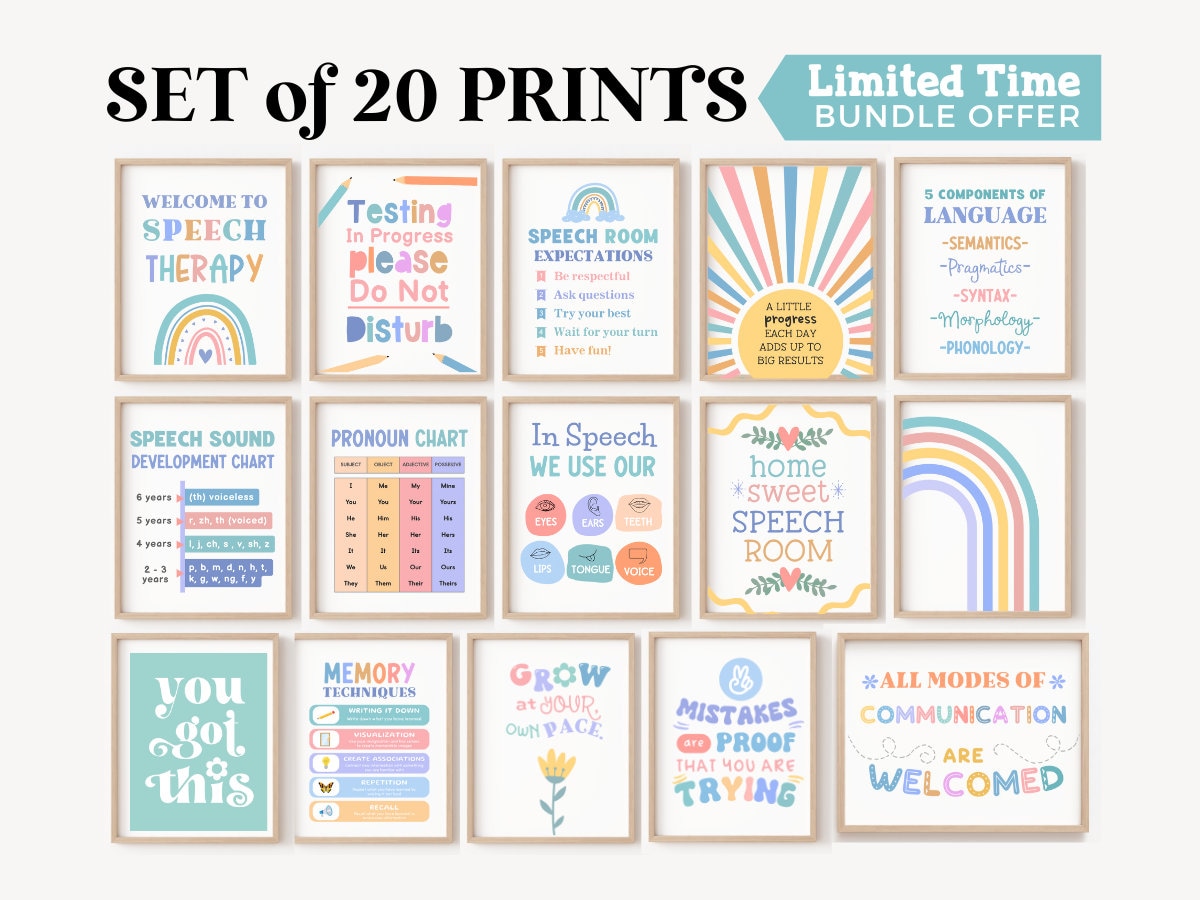Why the Right Decorations Matter in a Speech Therapy Office
As a speech therapist, I’ve seen firsthand the impact that a well-decorated office can have on both clients and their families. A thoughtfully arranged space not only makes the environment more inviting but also enhances the effectiveness of therapy sessions. From stimulating creativity to reducing anxiety, the right decor can transform an ordinary office into a welcoming haven for communication and learning.
Key Elements to Consider When Decorating Your Speech Therapy Office
1. Create a Warm and Welcoming Atmosphere
Using warm colors and inviting textures can help put clients at ease. Consider using soft lighting, comfortable seating, and personal touches such as family photos or motivational quotes.
2. Incorporate Educational Tools
Decor should also serve an educational purpose. Utilize wall decals, charts, and interactive displays that can facilitate communication and learning during therapy sessions.
3. Flexibility and Functionality
Ensure that furniture and decorations allow for flexible use. Multi-functional spaces can adapt for different activities, from individual sessions to group settings.
Popular Speech Therapy Office Decoration Ideas
1. Themed Zones
Creating different zones based on themes can stimulate different aspects of communication and learning.:
- **Storytelling Corner**: Equip this area with books and cozy seating. Use bright colors and soft textures.
- **Art and Craft Station**: A space adorned with art supplies can encourage creativity.
- **Interactive Wall**: Use chalkboards or whiteboards where clients can draw or write.

2. Sensory-Friendly Decor
Incorporating sensory-friendly elements can be particularly beneficial for clients with sensory processing issues:
- **Textures**: Use textured wall hangings, pillows, and sensory bins.
- **Soothing Colors**: Colors like soft blues and greens promote calmness.
- **Sound Elements**: Play gentle background music or incorporate sound walls.
3. Nature-Inspired Decor
Bringing elements of nature into your office can boost mood and focus:
- **Plants**: Use low-maintenance plants to improve air quality and create a peaceful environment.
- **Nature Imagery**: Decorate walls with images of nature to create a sense of calm.

Comparison of Decoration Styles for Speech Therapy Offices
| Style | Description | Pros | Cons | Best For |
|---|---|---|---|---|
| Traditional | Classic decor with muted colors and structured layouts. | Timeless, professional appearance. | Can feel rigid or unwelcoming. | Older clients, formal settings. |
| Modern | Minimalistic design with sleek and functional furniture. | Clean lines promote focus. | May lack warmth. | Younger clients, tech-focused sessions. |
| Whimsical | Bright colors, playful themes, and fun designs. | Engaging, encourages creativity. | Can be distracting for some clients. | Children and creative activities. |
Tips for Choosing the Right Equipment and Furniture
1. Ergonomics Matter
When selecting furniture, prioritize ergonomics to ensure comfort during therapy sessions. Adjustable chairs and desks that allow for varying heights can be helpful for different clients.

2. Quality Over Quantity
Invest in high-quality items that will last. It can be more cost-effective in the long run than continually replacing cheaper furniture.
3. Personalization
Encourage clients to personalize their space in the therapy room. Offer them choices in decor elements, which can help them feel more invested in their therapy.

Pros and Cons of Various Decorative Approaches
Pros
- Enhances client engagement and interaction.
- Creates a calming atmosphere that helps reduce anxiety.
- Encourages a variety of learning styles through visual and tactile elements.
Cons
- May require continuous updates to maintain interest.
- Potentially high initial investment for quality decor.
- Overly stimulating environments may not suit all clients.

Maintaining Your Decor: Best Practices
1. Regularly Update Elements
Keep your space fresh by updating decor regularly. This can involve changing wall art, swapping out toys, or rotating educational materials.
2. Gather Feedback
Ask clients and their families for feedback on the decor. Their insights can help you improve the environment and make it more welcoming.

3. Seasonal Themes
Consider introducing seasonal decorations to keep the space looking vibrant and engaging throughout the year.
FAQs About Speech Therapy Office Decorations
What types of decorations are most effective for speech therapy?
Incorporating educational tools, sensory-friendly elements, and thematic zones can make your space more effective for therapy.
How often should I change the decor in my speech therapy office?
It’s beneficial to update decorations at least seasonally or when introducing new therapy techniques to keep the environment fresh.
Can I DIY decorations for my speech therapy office?
Absolutely! DIY projects can be a fun way to personalize your space and create unique educational tools.